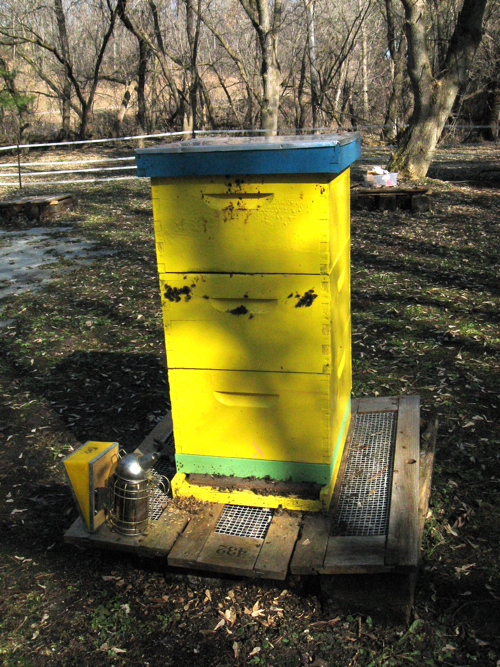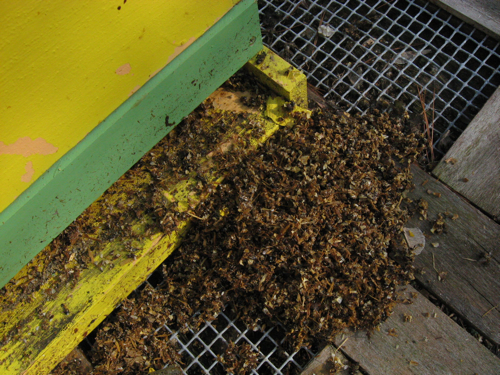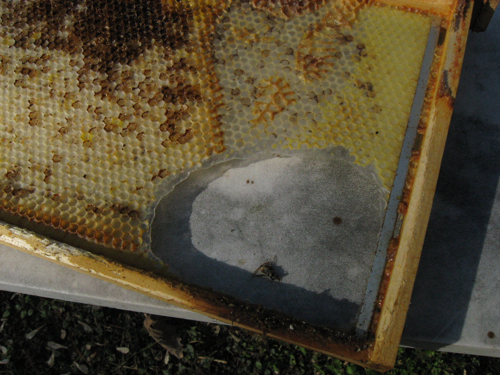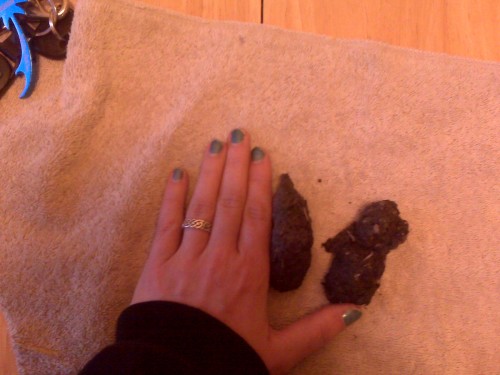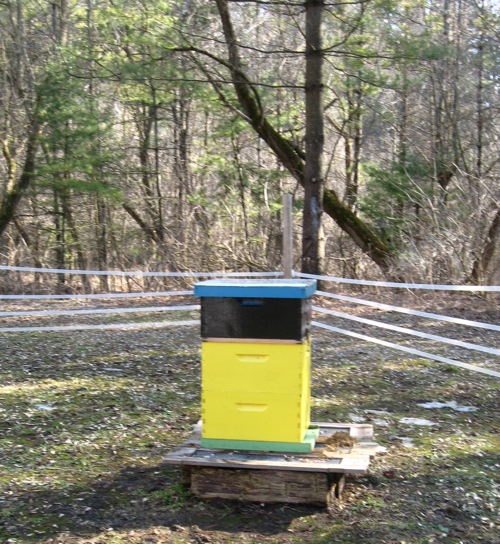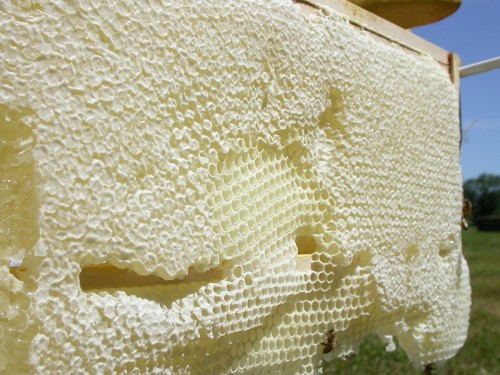 It's that special time of year when Lorraine extracts a little early honey, follows the strict codes, guidelines and fees of the county fair and submits it for approval. I know we aren't the only ones entering honey because fellow beekeepers in the same county made some noise when we won last year that they intended to "serve us" and that this year it was "on" and we had better "bring it."
It's that special time of year when Lorraine extracts a little early honey, follows the strict codes, guidelines and fees of the county fair and submits it for approval. I know we aren't the only ones entering honey because fellow beekeepers in the same county made some noise when we won last year that they intended to "serve us" and that this year it was "on" and we had better "bring it."
Bring it we did and got the blue ribbon! That now makes three years in a row for extracted honey and two years in a row for comb honey. Our bees rule!
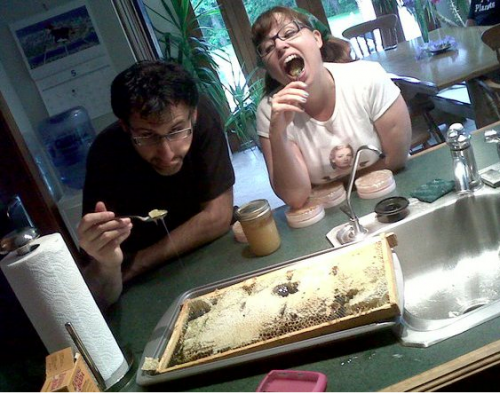
Above is Storm of Paul & Storm sampling comb honey fresh from the hive earlier this summer. I know our honey awesome and when friends visit and we force them to partake of the honey they also agree it is awesome. But it is so nice to get the county officials behind you who say, "Indeed, mighty fine honey you got there, ma'am!"
An individual who is probably not as impressed with this victory is Lola.

If you missed it on Twitter, Mr. Neil's puppy got nailed by the bees. We took her to the hive and didn't have any idea she had been stung. When the other dog Cabal has been stung--you know. He yelps, runs and if bees follow him, he tries to fight them by snapping wildly. For the most part, the dogs understand to stay away, but here and there they get stung. Interesting thing though about Lola was that we never heard any yelping at all. When we were back at the house, I noticed that she kept wiping her face with her paws. I asked Mr. Neil, "What's that all about?"
"Don't know," he said. "Dog dream?"

She continued to rub her face against her paws and when she paused, I thought her eye looked swollen. We immediately went to her to check that no stingers have been left behind. I think we found where she was stung, but it looked like the stinger was gone. Her face was so itchy, she rubbed it against anything she came in contact with: paws, carpeting, grass, rear ends--you name it.

Here you can really see the swelling, Mr. Neil said she looked like a cartoon dog. He checked out what we could do to help the poor thing--turns out over the counter antihistamine medication.

Here's what Lola should look like for comparison. Her swelling went down a few hours after Mr. Neil gave her some meds. Swelling is normal for bee stings. Many people think that they have a fatal allergy to bees when they swell up from a sting. That's a normal reaction. When you really want to worry is when you itch in weird places. If you get stung on the hand and soon after the bottoms of your feet or armpits are itchy--that's a sign of a fatal allergy and you should hightail it to the emergency room ASAP.
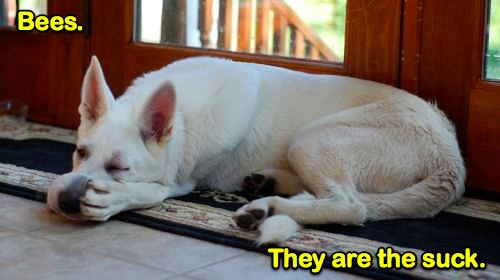
This is my favorite photo with a Hans inspired caption. Poor Lola, she looks like she's wondering why her nose is so big. That's got to be weird for a dog that uses smell the way we use sight.
Some good with the bad. Glad Lola is better and happy that our bees still reign supreme in the county.





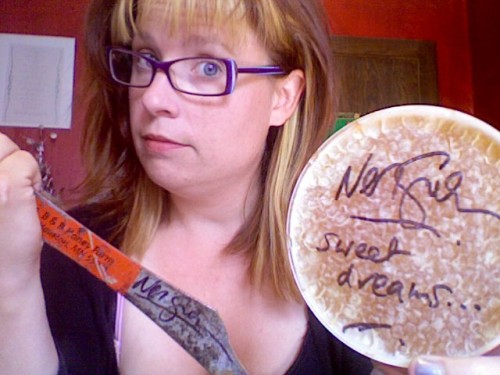 Just an FYI: if you are at
Just an FYI: if you are at 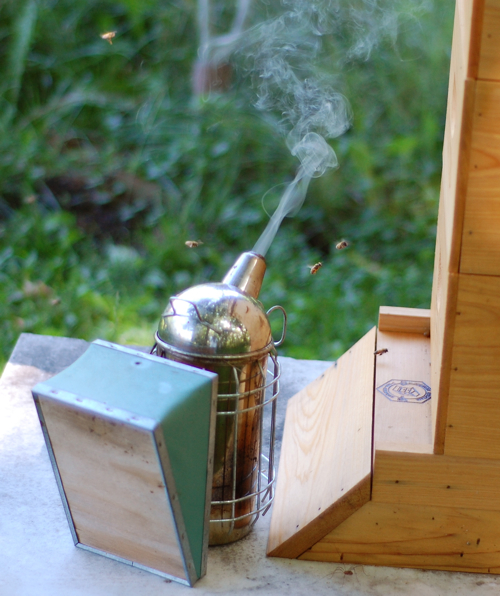
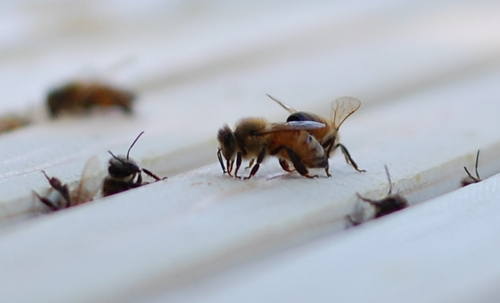
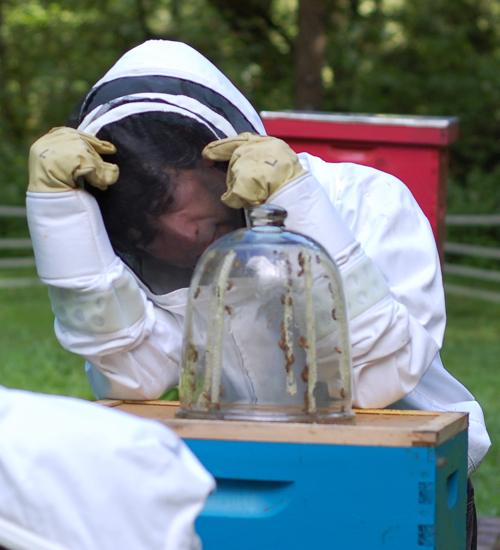
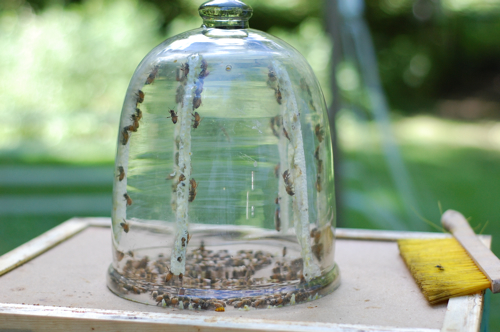
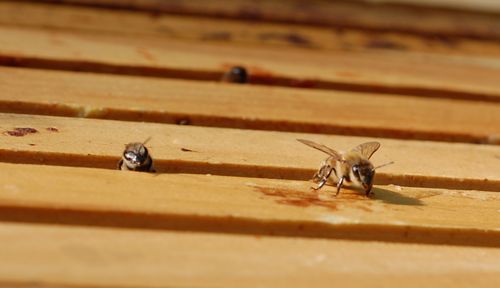
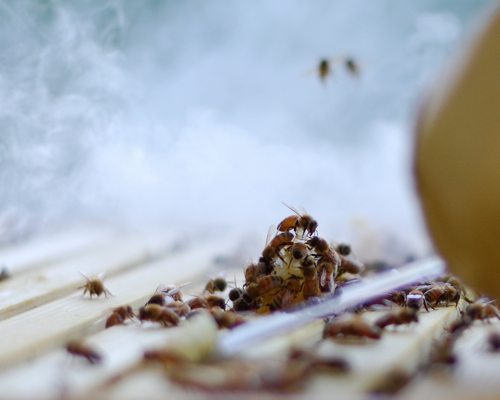









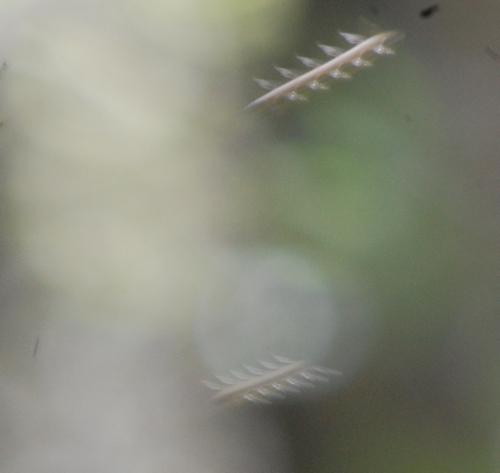 I digiscoped the strangest photo of my bees yesterday. I'm not sure what setting I had the camera on but they look like odd little space ships.
I digiscoped the strangest photo of my bees yesterday. I'm not sure what setting I had the camera on but they look like odd little space ships.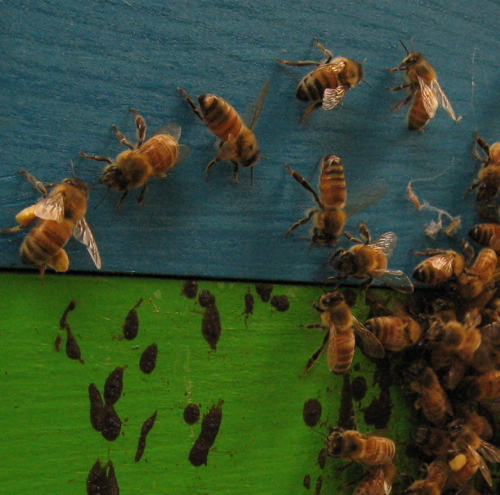 I know the reports for allergy sufferers has been rough this spring, but our bees our loving it. They are returning to the hives with massive pollen baskets. All four hives are still going strong this spring. I think this early spring allowed us to open them up early enough to get them ventilated and get a head start on the brood and set up for this summer's honey season.
I know the reports for allergy sufferers has been rough this spring, but our bees our loving it. They are returning to the hives with massive pollen baskets. All four hives are still going strong this spring. I think this early spring allowed us to open them up early enough to get them ventilated and get a head start on the brood and set up for this summer's honey season.
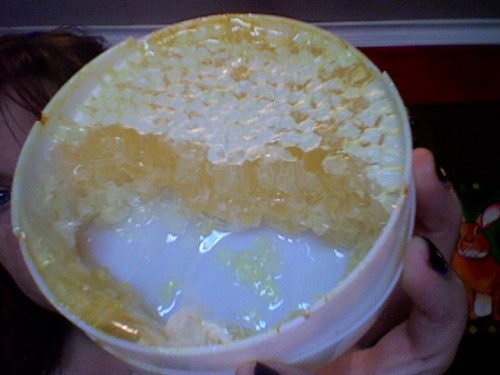
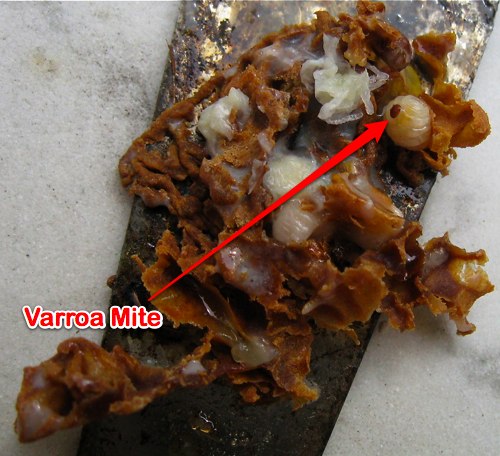
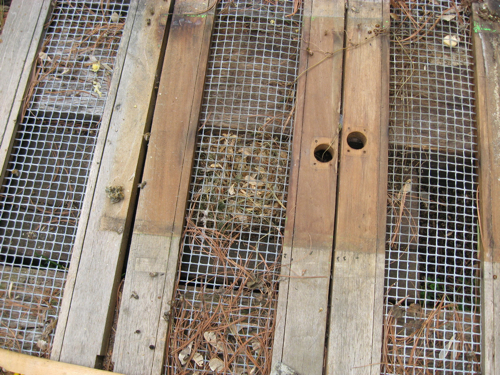
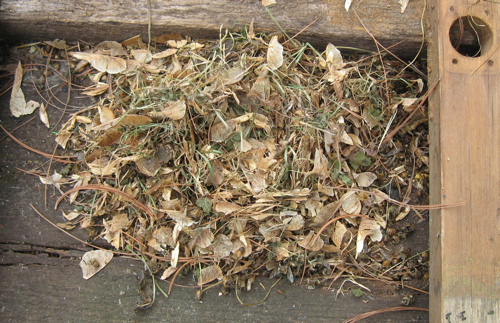
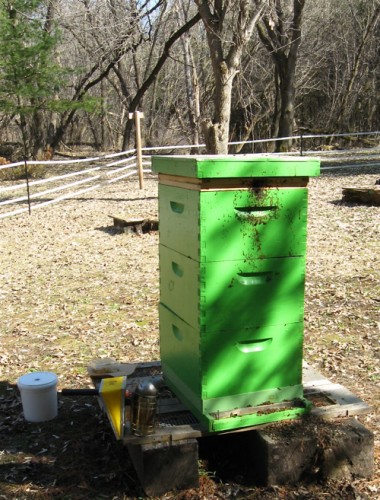
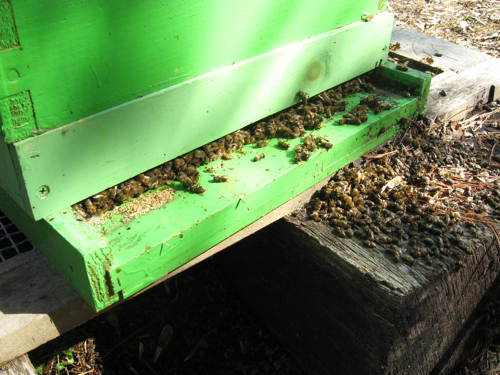
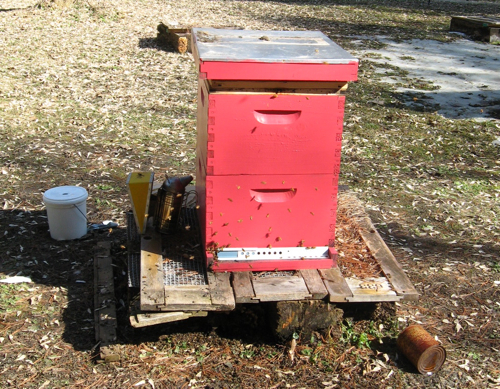
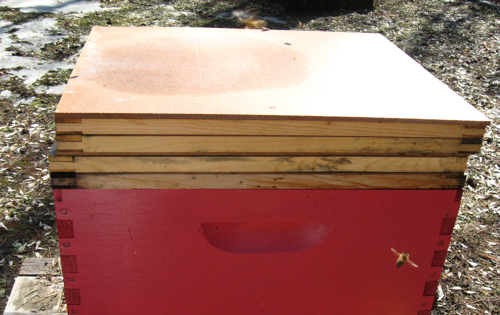
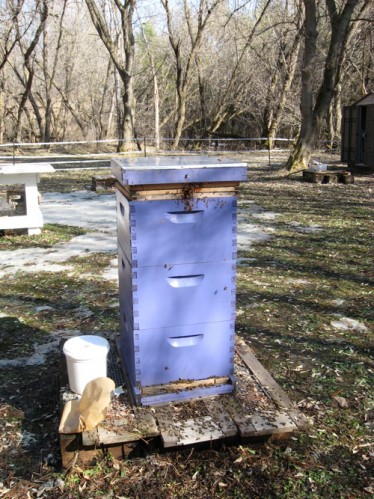
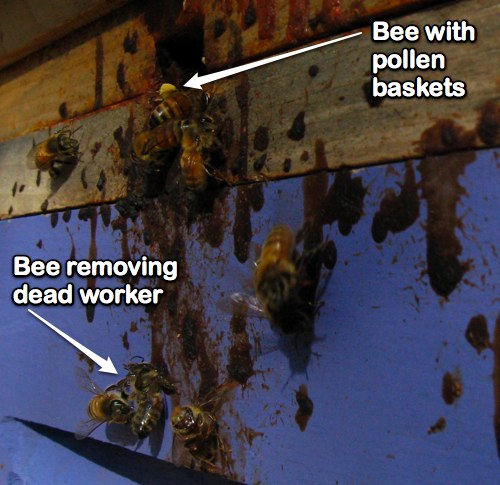
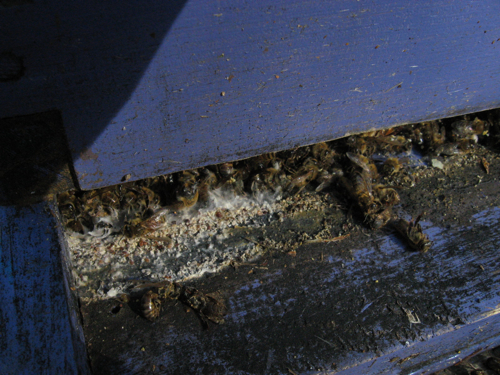 When I removed the entrance reducer, some of the dead, wet bees at the entrance had grown some fungus. It was just at the entrance and scraped out piles of dead bees from the bottom until a few live ones flew out. There was a good ball of bees at the top and they were very excited about the feeder pail and pollen patty.
When I removed the entrance reducer, some of the dead, wet bees at the entrance had grown some fungus. It was just at the entrance and scraped out piles of dead bees from the bottom until a few live ones flew out. There was a good ball of bees at the top and they were very excited about the feeder pail and pollen patty.